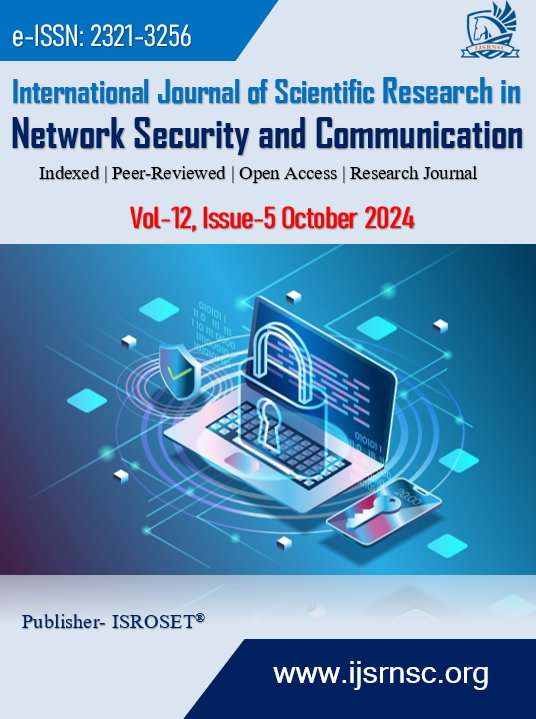4G Mobile Network Planning in Seiyun City to Upgrade the Existed Networks
Keywords:
4G Network, 4G coverage, Network planning, throughputAbstract
This paper presents the results of a research effort on the present and future of the current government cellular communications network in the city of Seiyun in terms of coverage, signal strength, and service provided. In recent times, Seiyun city has experienced an increase in population, a reduction in network coverage, and insufficient capacity from corporate stations to service certain areas. Many 4G stations have been planned and established in Seiyun as a result of the growing demand for mobile data consumption brought on by new applications like video chats, live streaming of sporting events, faster online browsing, and other heavily streamed material. The goal of the fourth generation of radio technologies, or 4G, is to increase speed and capacity. It can handle broader channels up to 20 MHz, shorter transmission times, and better wireless access technologies. For this research, we have designed a 4G network that will be established over the course of the next ten years, and even beyond. Furthermore, this research has involved comparing the signal levels and throughput values of our network, which covers the entire city of Seiyun, with current networks.
References
A. Korinek, M. Schindler, J. Stiglitz, “Technological Progress, Artificial Intelligence, and Inclusive Growth”, IMF Working Papers, 2021.
Measuring the Information Society. In ITU (2018), 2018.
Transition to 4G: 3GPP Broadband Evolution to IMT-Advanced. Rysavy Research/3G Americas, 2010.
N. Dumbre, M. Patwa, K. Patwa, “5G WIRELESS TECHNOLOGIES_Still 4G auction not over, but time to start talking 5G”, International Journal of science, Engineering and Technology Research (IJSETR), Vol.2, no.2, 2013.
A. Mourad, R. Yang, PH. Lehne, A. De La Oliva,” A baseline roadmap for advanced wireless research beyond 5G”, Electronics, 9(2):351, 2020.
H. Viswanathan, P.E. Mogensen, "Communications in the 6G Era," in IEEE Access, Vol.8, pp.57063-57074, 2020,
S. K. Jha, R. Rokaya, A. Bhagat, A. R. Khan, L. Aryal, "LTE Network: Coverage and Capacity Planning — 4G Cellular Network Planning around Banepa," 2017 International Conference on Networking and Network Applications (NaNA), Kathmandu, Nepal, pp.180-185, 2017.
M. Mohammed, K. Bilal “LTE Radio Planning Using Atoll Radio Planning and Optimization Software”, International Journal of Science and Research (IJSR). 3. pp.1460-1464, 2014.
J. A. LaGro,” Site Analysis: A Contextual Approach to Sustainable Land Planning and Site Design” 2nd Ed. John Wiley & Sons, Inc., United Kingdom, 2008.
A. AL-Hamami, S. Hashem “Optimal Cell Towers Distribution by using Spatial Mining and Geographic Information System” World of Computer Science and Information Technology Journal (WCSIT)ISSN: 2221-074, Vol.1, No.2, pp.44-48, 2011.
X. Chen, "Cell coverage analysis of existing network and advanced testbed network", 2011 6th International ICST Conference on Communications and Networking in China (CHINACOM), Harbin, pp.864-869, 2011.
Q. C. Li, H. Niu, A. T. Papathanassiou, G. Wu, "5G Network Capacity: Key Elements and Technologies," in IEEE Vehicular Technology Magazine, vol. 9, no. 1, pp.71-78, 2014.
S. Kyriazakos, I. Soldatos, G. Karetsos, “4g Mobile and Wireless Communications Technologies”, River Publishers; 1st edition, Denmark 2008.
M. S. Ali, E. Hossain and D. I. Kim, “Coordinated MultipointTransmission in Downlink Multi-Cell NOMA Systems: Models and Spectral Efficiency Performance”, IEEE Wireless Communications, vol.25, no. 2, pp.24-31, 2018.
Downloads
Published
How to Cite
Issue
Section
License

This work is licensed under a Creative Commons Attribution 4.0 International License.
Authors contributing to this journal agree to publish their articles under the Creative Commons Attribution 4.0 International License, allowing third parties to share their work (copy, distribute, transmit) and to adapt it, under the condition that the authors are given credit and that in the event of reuse or distribution, the terms of this license are made clear.









